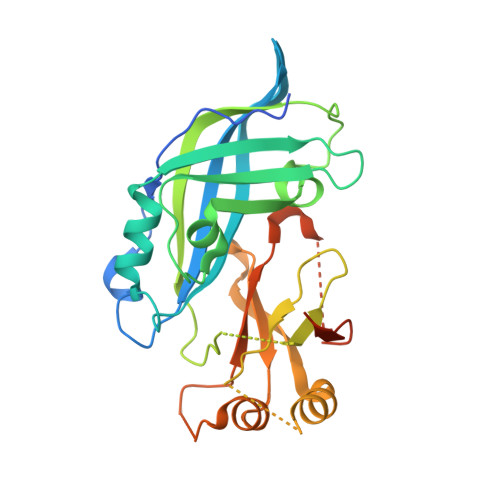Structural Rearrangement of Ebola Virus VP40 Begets Multiple Functions in the Virus Life Cycle.
Bornholdt, Z.A., Noda, T., Abelson, D.M., Halfmann, P., Wood, M.R., Kawaoka, Y., Saphire, E.O.(2013) Cell 154: 763-774
- PubMed: 23953110
- DOI: https://doi.org/10.1016/j.cell.2013.07.015
- Primary Citation of Related Structures:
4LD8, 4LDB, 4LDD, 4LDI, 4LDM - PubMed Abstract:
Proteins, particularly viral proteins, can be multifunctional, but the mechanisms behind multifunctionality are not fully understood. Here, we illustrate through multiple crystal structures, biochemistry, and cellular microscopy that VP40 rearranges into different structures, each with a distinct function required for the ebolavirus life cycle. A butterfly-shaped VP40 dimer traffics to the cellular membrane. Once there, electrostatic interactions trigger rearrangement of the polypeptide into a linear hexamer. These hexamers construct a multilayered, filamentous matrix structure that is critical for budding and resembles tomograms of authentic virions. A third structure of VP40, formed by a different rearrangement, is not involved in virus assembly but instead uniquely binds RNA to regulate viral transcription inside infected cells. These results provide a functional model for ebolavirus matrix assembly and the other roles of VP40 in the virus life cycle and demonstrate how a single wild-type, unmodified polypeptide can assemble into different structures for different functions.
- Department of Immunology and Microbial Science, The Scripps Research Institute, La Jolla, CA 92037, USA.
Organizational Affiliation:
















